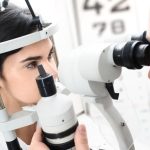Unleashing the Potential: Brain Repair and Enhancement with Dr. Curtis Cripe
Share

Dr. Curtis Cripe and others like him who deal with the intricacies of the human are in awe of it being a marvel of complexity and resilience. The human is by far the most intriguing and interesting organ that has long captivated scientists and researchers. Recent advancements in neuroscience and technology have opened new frontiers in the realms of brain repair and enhancement.
How does the Brain repair itself?
As already mentioned the brain is an extremely fascinating organ that is capable of self-repair. The more surprising angle of this process is that it does not do so only in one way. There is more than one way in which the human brain is repaired, below are mentioned some such methods.
Neuroplasticity:
The brain’s remarkable ability to reorganize itself and form new neural connections is known as neuroplasticity. When one suffers any injury or stroke, this process forms the foundation for recovery and rehabilitation. It allows individuals to regain lost functions and adapt to new challenges.
Stem Cell Therapy:
A very commonly known process, the stem cell therapy holds promise in regenerating damaged brain tissue. Stem cells are capable of differentiating into various cell types. These can be directed to replace damaged neurons and support the repair of neural circuits. The treatment of conditions such as traumatic brain injuries and neurodegenerative diseases finds hope in this process.
Neuroregeneration Techniques:
Researchers and doctors such as Dr. Curtis Cripe are exploring various techniques to stimulate neuroregeneration. This includes the use of growth factors, biomaterial scaffolds, and electrical stimulation. These approaches aim to create a conducive environment for the growth and repair of neural tissue. This is done to foster recovery after injuries.
Brain-Machine Interfaces (BMIs):
One of the most groundbreaking approaches to brain repair is the BMI. By virtue of this, one can establish direct communication between the brain and external devices. These interfaces can help individuals with paralysis or neurological disorders. The BMI is an aid to control prosthetic limbs, computers, or other devices, restoring a degree of independence and functionality.
How does the Brain Enhance itself?
It is not enough for the brain to repair itself and get back to normal functionality. The brain needs to enhance itself as well. The following are how the brain can achieve such enhancements says Dr. Curtis Cripe.
Cognitive Enhancements:
The cognitive functions, such as memory, attention, and problem-solving are optimized for cognitive enhancement. Some non-invasive techniques, namely, transcranial magnetic stimulation (TMS) and neurofeedback are being explored to enhance brain performance.
Neuropharmacology:
Nootropics or smart drugs are the products of advancements in neuropharmacology. Ranging from prescription medications to natural supplements, these are believed to enhance cognitive functions. However, ethical considerations and potential side effects warrant careful scrutiny.
Brain-Computer Interfaces (BCIs):
BCIs establish a direct link between the brain and external devices and help in brain enhancement effectively. These interfaces have applications in areas such as communication, gaming, and even augmenting human capabilities. However, BCIs raise ethical questions about privacy, security, and the potential for unintended consequences.
Optogenetics:
This is a technique that involves using light to control and manipulate specific neurons in the brain. Although this is currently in research settings, optogenetics holds potential for therapeutic applications and precise enhancements in the future.
Researchers continue to unravel the complexities of neuroplasticity, stem cell therapy, and brain-machine interfaces. Nonetheless, ethical considerations must guide the responsible development and application of these technologies.


















Social Media